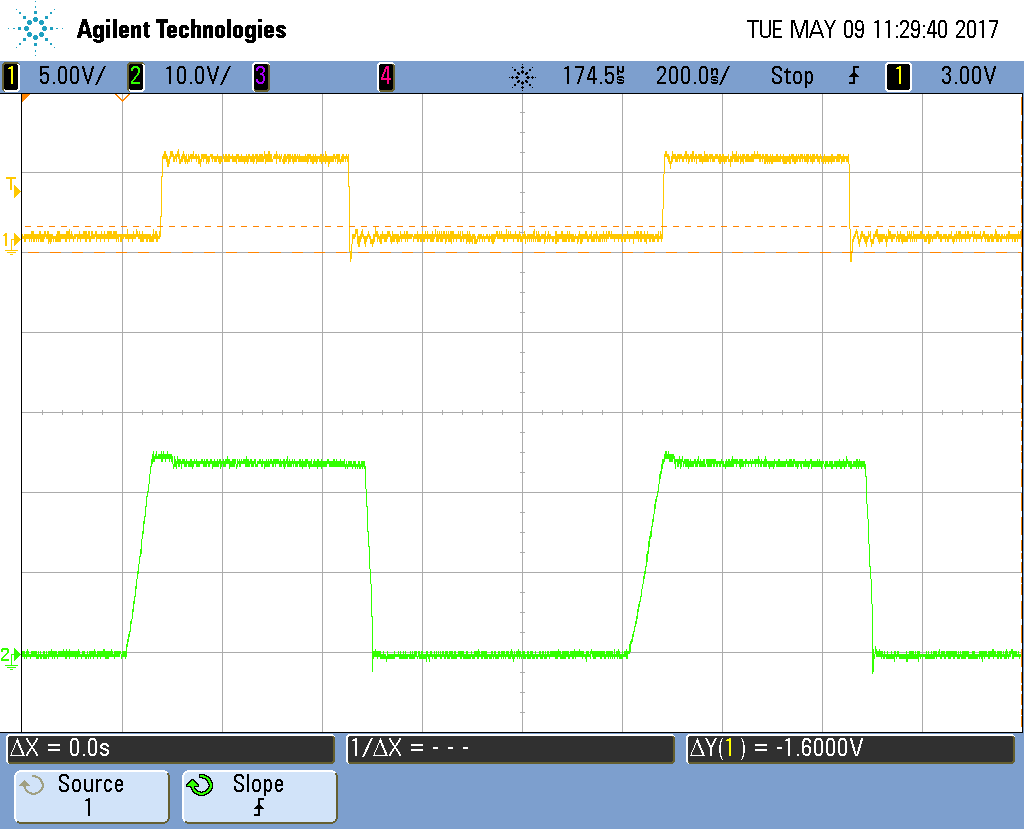Other Parts Discussed in Thread: INA271
I am using the CSD97394Q4M in an application to drive dc cooling fans according to the temperature on the inside of a large chassis. These parts worked famously on bench trials with a varying PWM signal and Vin voltages up to 25 volts, so I desgned it into a backplane to control the speed of the fans. The trouble came when I attempted to run the fully loaded backplane in the environmental oven up to 30°C. My log showed that the CSD97394Q4M failed at 28°. Looking for answers I found on the Absolute Maximum Ratings that showed Vsw to PGND to be 30V max. With 24V on Vin, there is some overshoot to above 30V for maybe 2nS. Next I tried lowering Vin. Even with lower Vin I still get failures when the temperature is elevated. What do you think the problem is and what can I do about this?


